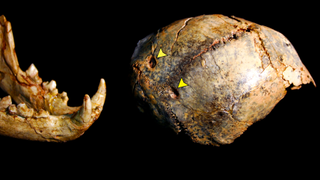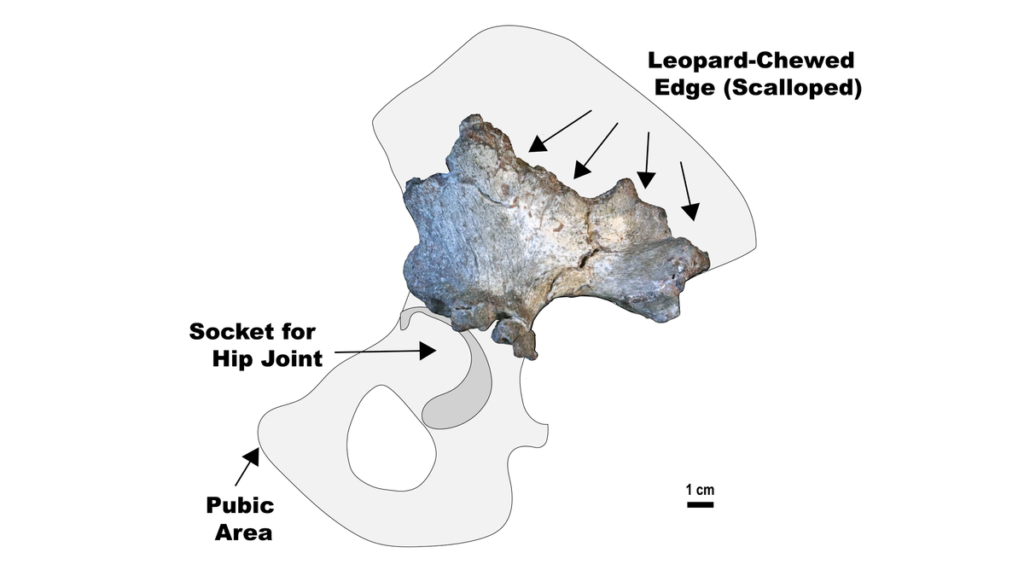One of the smallest human relatives ever found has been unearthed in South Africa. Standing just 3 feet, 4.5 inches (1.03 meters) tall, the adult Paranthropus robustus, who died 2 million years ago, is even shorter than the famously diminutive “Lucy” from Ethiopia and the mysterious group of tiny “hobbits” from Indonesia — but researchers aren’t sure why.
“These small early hominin individuals are reconstructed as shorter and stockier than modern human ‘pygmies’,” or groups of people with an average male height under 4 feet, 11 inches inches (150 centimeters), study lead author Travis Pickering, a paleoanthropologist at the University of Wisconsin–Madison, told Live Science in an email. The newly uncovered individual, designated SWT1/HR-2, “was probably similarly built — short and stocky,” he said.
The leg bones of this species are rarely found, so the new finds also provide clues about how P. robustus walked. The researchers described their findings in the April issue of the Journal of Human Evolution.
The team retrieved chunks of sedimentary rock dated between 1.7 million and 2.3 million years old from the Swartkrans limestone cave, which is located in South Africa’s Cradle of Humankind — a region that encompasses 180 square miles (470 square kilometers) and includes more than a dozen major fossil sites. When researchers began to excavate the blocks in the lab, they discovered three connecting bones — the left hip, femur and tibia — all from one young adult hominin.
Based on the shape of the bones, the researchers think that this individual was a young adult female from the species P. robustus, also known as a robust australopithecine due to the large size of its teeth and face. But very few fossils of the body of P. robustus have ever been found, making the new discovery important for understanding what they looked like and how they moved.
Related: 1.4 million-year-old jaw that was ‘a bit weird for Homo’ turns out to be from never-before-seen human relative
“She was certainly robust in the pelvis and at the hip joint,” Pickering said. “However, her leg bones are not as remarkable in this regard — and this is one of the quizzical things about the fossils.”
Taken together, the robust hip bones coupled with the more slender leg bones show that this P. robustus moved through the landscape on two feet but also likely climbed trees in search of food or to evade predators, the researchers said in the study.
Close examination of the bones also revealed the probable cause of this young female’s death: A leopard devoured her.
Leopards tend to hang out in trees near cave openings and prefer to pounce on prey that weighs around 55 pounds (25 kilograms), according to the researchers. This tiny P. robustus, which was found inside a cave, probably weighed about 60.4 pounds (27.4 kg). Carnivore tooth marks were also found on the hominin’s bones, offering further clues about the cause of death. Other fossils at the site also have puncture marks that match leopard teeth, study co-author C.K. Brain has argued in past research.

Size is a mystery
Although the leg bones provide important new evidence for what life was like for P. robustus, the researchers are still unsure why this species was so small.
There is currently no evidence that the species was affected by insular dwarfism, study co-author Jason Heaton, a paleoanthropologist at the University of Alabama at Birmingham, told Live Science in an email. That process — in which a species evolves to be smaller over time due to competition for resources — may be why Homo floresiensis, also called the hobbits, were very short.
Rather, for P. robustus, “it may reflect natural variation within the species, population-level differences, or environmental influences such as nutrition or developmental constraints,” Heaton said.
More research into the body size of P. robustus is needed, the researchers noted in their study, and further excavation at Swartkrans could yield more bones from the same individual.
“I think that there is a good chance that much more of the SWT1/HR-2 skeleton will be recovered,” Pickering said, “especially if we are correct and she was killed and eaten by a leopard, since leopards do not generally consume bones.”
